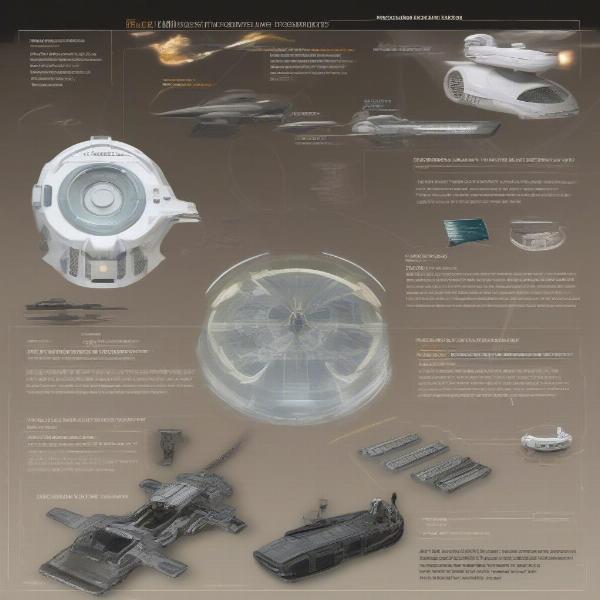The Hunger Games. A story of survival, rebellion, and a dystopian society. But is the Hunger Games sci-fi? This question sparks debate amongst fans and critics alike. Let’s explore the nuances of this popular series and see where it fits within the science fiction landscape.
While The Hunger Games doesn’t feature spaceships or aliens, its core elements align with several key sci-fi tropes. The Capitol’s advanced technology, genetic manipulation, and totalitarian control create a world distinctly different from our own, a hallmark of the genre. The series explores the potential consequences of unchecked technological advancement and the dangers of oppressive regimes, themes frequently found in science fiction narratives. The very premise of the Hunger Games, a televised spectacle of survival where children are forced to fight to the death, presents a chillingly plausible future shaped by political manipulation and technological prowess.
Technological Advancements in Panem: A Sci-Fi Staple
The Hunger Games showcases various technological marvels, further solidifying its connection to science fiction. From hovercrafts and advanced weaponry to genetically modified creatures like the tracker jackers and muttations, Panem is a world undeniably shaped by technology. This technological disparity between the Capitol and the districts highlights the social and political commentary inherent in the series, another common thread in sci-fi. The Capitol uses its technological superiority to maintain control and suppress dissent, creating a stark contrast that fuels the narrative’s tension. These elements resonate with classic sci-fi themes of technological dominance and its potential to create dystopian societies. For those curious about similar dynamics in other works, you might find this article about the conflict in the Hunger Games informative: what is the conflict in the hunger games.
How Technology Shapes the Games
The Games themselves are a product of advanced technology. The arenas are meticulously designed and controlled, featuring environmental manipulations and deadly obstacles. The Capitol’s surveillance technology allows them to monitor every move of the tributes, turning the Games into a brutal form of entertainment. This manipulation of technology for both control and entertainment is a key aspect of the sci-fi genre. Think about it: The Hunger Games offers a cautionary tale about the potential misuse of technology and the dangers of prioritizing spectacle over human life.
 Technological Advancements in Panem: Hovercrafts, Weaponry, and Genetic Engineering
Technological Advancements in Panem: Hovercrafts, Weaponry, and Genetic Engineering
Dystopian Societies: A Sci-Fi Cornerstone
The Hunger Games paints a vivid picture of a dystopian society. Panem, with its oppressive Capitol and impoverished districts, reflects a common sci-fi theme: the dangers of unchecked power and social inequality. The series explores themes of rebellion, survival, and the fight for freedom against a totalitarian regime, all common tropes within dystopian fiction, a subgenre of science fiction. This examination of societal structures and their potential for corruption is a recurring theme in sci-fi.
Panem’s Social Structure: A Dystopian Nightmare
The rigid social hierarchy of Panem, where the Capitol thrives on the exploitation of the districts, is a classic dystopian trope. The Hunger Games themselves serve as a tool for maintaining control and suppressing any thoughts of rebellion. The constant surveillance, the suppression of information, and the brutal enforcement of the law all contribute to the dystopian atmosphere. This exploration of societal control resonates with many other works in the sci-fi genre.
Genetic Manipulation: A Sci-Fi Frontier
The presence of genetically engineered creatures, like the tracker jackers and the various muttations, introduces a biological element to the sci-fi aspects of The Hunger Games. These creations serve as both tools of the Capitol and symbols of its disregard for natural order. This blurring of the lines between science and nature is a common theme in science fiction, raising ethical questions about the extent of human intervention in the natural world. The new Hunger Games film continues this trend. For those wondering about the quality of the latest installment, check out our review: is the new hunger games good.
The Ethics of Genetic Engineering in Panem
The use of genetic engineering in The Hunger Games is not simply a technological advancement; it’s a tool of oppression and control. The Capitol uses these genetically modified creatures to enforce its will and maintain its power over the districts. This manipulation of life itself raises ethical questions that are central to many sci-fi narratives. Think of the ethical dilemmas presented in other sci-fi stories involving cloning or genetic enhancement. The Hunger Games explores similar themes, highlighting the potential dangers of unchecked scientific ambition. Similar themes can be found in discussions about Johanna Mason’s victory: how did johanna mason win the hunger games.
The Human Element: Sci-Fi with Heart
While technology and dystopian settings play crucial roles, The Hunger Games is ultimately a story about human resilience, courage, and the fight for freedom. Katniss Everdeen’s journey from tribute to symbol of rebellion resonates with audiences because it taps into universal themes of hope and resistance. This focus on the human element within a sci-fi framework makes the story even more compelling. This blend of futuristic elements and relatable human struggles is a hallmark of great science fiction. If you’re interested in learning more about the prevalence of role-playing in games, a common thread in interactive sci-fi experiences, you can find more information here: what does rp stand for on games.
Conclusion: The Hunger Games and the Sci-Fi Spectrum
So, is The Hunger Games sci-fi? The answer is a resounding yes. While it may not fit neatly into the space opera or cyberpunk categories, its exploration of advanced technology, dystopian societies, and genetic manipulation firmly places it within the broader realm of science fiction. The Hunger Games uses its futuristic setting to explore timeless themes of power, oppression, and the enduring human spirit, proving that science fiction can be both thrilling and thought-provoking.
FAQs
-
What are some key sci-fi elements in The Hunger Games? Advanced technology, genetic modification, and a dystopian society are some prominent sci-fi elements.
-
How does technology contribute to the dystopian nature of Panem? The Capitol’s technological advantage allows for surveillance, control, and the creation of the Hunger Games themselves.
-
What role does genetic engineering play in The Hunger Games? Genetically engineered creatures are used as weapons and tools of oppression by the Capitol.
-
Why is The Hunger Games considered dystopian? Panem’s oppressive social structure, characterized by extreme inequality and control, aligns with the characteristics of a dystopian society.
-
Does the focus on human emotion detract from the sci-fi aspects of the story? No, the human element enhances the sci-fi elements by grounding the futuristic setting in relatable human experiences.
-
What makes The Hunger Games a compelling story? The blend of futuristic elements, social commentary, and a compelling protagonist makes The Hunger Games a captivating read.
-
Is Donald Sutherland in the new Hunger Games movie? For information about Donald Sutherland’s involvement in the new Hunger Games film, you can visit: is donald sutherland in the new hunger games.

